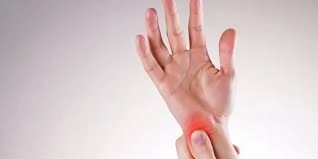
Carpal Tunnel Syndrome: Non-Surgical Treatment Strategies
Published on: 2025-06-22 | Written by: Dr. Shaimaa Talab Al-Basyouni, specialist in physical medicine, rheumatism and rehabilitation
Carpal Tunnel Syndrome (CTS) is a common neurological condition affecting the hand and wrist, causing bothersome symptoms like pain, numbness, and tingling. These symptoms arise from the compression of the median nerve as it passes through the carpal tunnel in the wrist. The ramifications of CTS extend beyond physical discomfort, significantly impacting daily activities and sleep quality, thus necessitating effective therapeutic intervention. Fortunately, numerous non-surgical treatment options have proven effective in alleviating symptoms and enhancing patients' quality of life.
In this article, we delve into the underlying causes of Carpal Tunnel Syndrome and explore the prominent non-surgical treatment strategies available, drawing upon the valuable expertise of Dr. Shaimaa Talab Bassiouny, a consultant in Physical Therapy and Rehabilitation.
Understanding the Causes of Carpal Tunnel Syndrome
Several factors contribute to the development of Carpal Tunnel Syndrome, including:
- Repetitive Activities and Occupations: Repetitive wrist movements, common in professions like typing, using vibrating hand tools, or playing certain musical instruments, are a primary factor in increasing pressure on the median nerve.
- Improper Posture: Maintaining the wrist in unnatural positions for extended periods can narrow the carpal tunnel and increase the likelihood of nerve compression.
- Hormonal Changes: Periods such as pregnancy or menopause can lead to fluid retention and swelling, thereby increasing pressure within the carpal tunnel.
- Underlying Medical Conditions: Certain chronic diseases like diabetes, rheumatoid arthritis, hypothyroidism, and obesity are associated with an elevated risk of developing CTS.
- Previous Injuries: Wrist injuries, such as accidents or fractures, can lead to structural changes that narrow the carpal tunnel.
- Genetic Predisposition: Genetic factors play a role in determining the anatomical size of the carpal tunnel, potentially making some individuals more susceptible to CTS.
Non-Surgical Treatment Strategies: Dr. Shaimaa Talab Bassiouny's Perspective
Dr. Shaimaa Talab Bassiouny emphasizes that early intervention and adherence to non-surgical treatment protocols are cornerstones in managing Carpal Tunnel Syndrome for most cases. These strategies include:
- Rest and Activity Modification: Reducing or avoiding activities that exacerbate symptoms is a crucial first step. Dr. Shaimaa Talab Bassiouny recommends taking regular breaks during activities requiring hand and wrist use, along with modifying work postures to optimize the ergonomic environment.
- Supportive Splints: Wearing a wrist splint, especially during sleep, helps maintain the wrist in a neutral position, reducing nocturnal pressure on the median nerve and alleviating numbness and pain.
- Medication: Non-steroidal anti-inflammatory drugs (NSAIDs) may be recommended to alleviate pain and inflammation, but they should be used under medical supervision.
- Rehabilitation Exercise Programs: Dr. Shaimaa Talab Bassiouny underscores the importance of targeted therapeutic exercises, which focus on stretching and strengthening forearm and hand muscles to improve wrist biomechanics and relieve nerve compression.
- Corticosteroid Injections: In some cases, localized corticosteroid injections into the carpal tunnel can provide rapid and temporary relief by reducing inflammation and swelling.
- Specialized Physical Therapy: A physical therapist plays a pivotal role in developing an individualized treatment plan. This includes manual therapy techniques, nerve gliding exercises, and extensive patient education on wrist preservation strategies and preventing symptom recurrence. Dr. Shaimaa Talab Bassiouny's expertise guides patients towards the best treatment practices.
Managing Carpal Tunnel Syndrome requires a holistic approach based on accurate assessment and adherence to the treatment plan. By implementing the mentioned non-surgical strategies, the vast majority of patients can achieve significant symptom improvement and full recovery of hand and wrist function without the need for surgical intervention, with the support and guidance of specialists like Dr. Shaimaa Talab Bassiouny.

